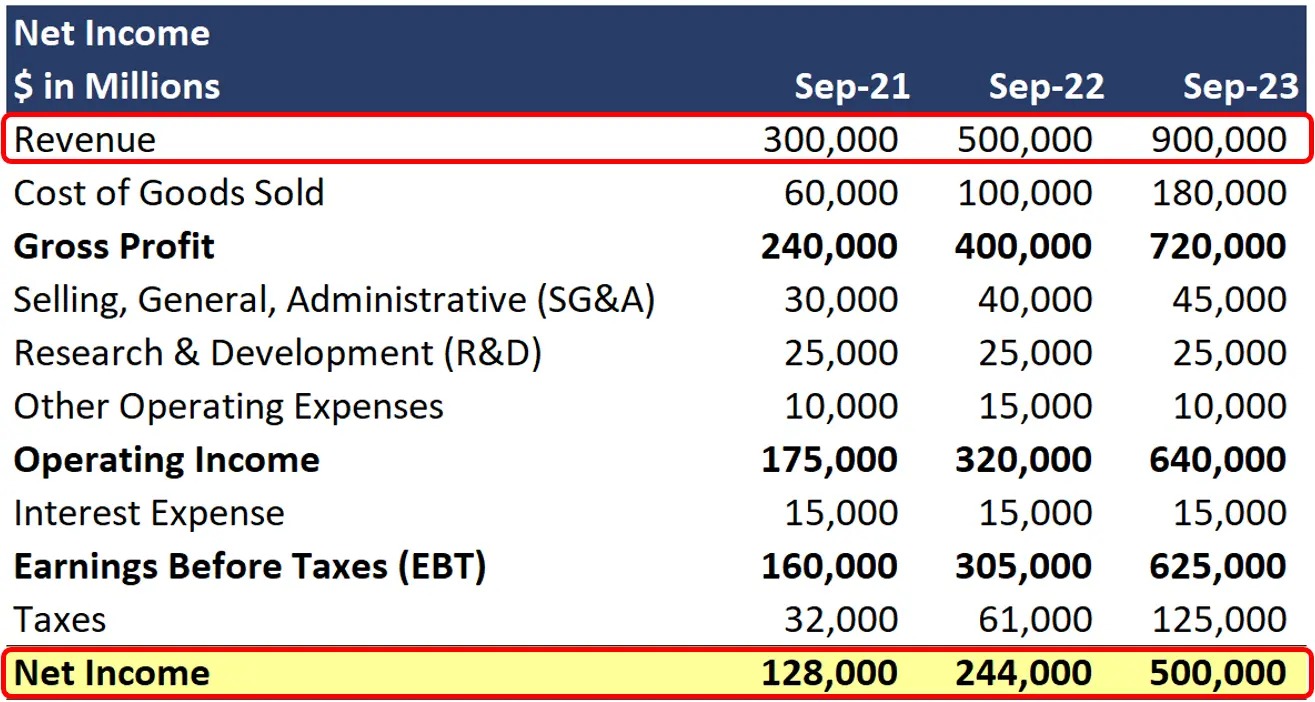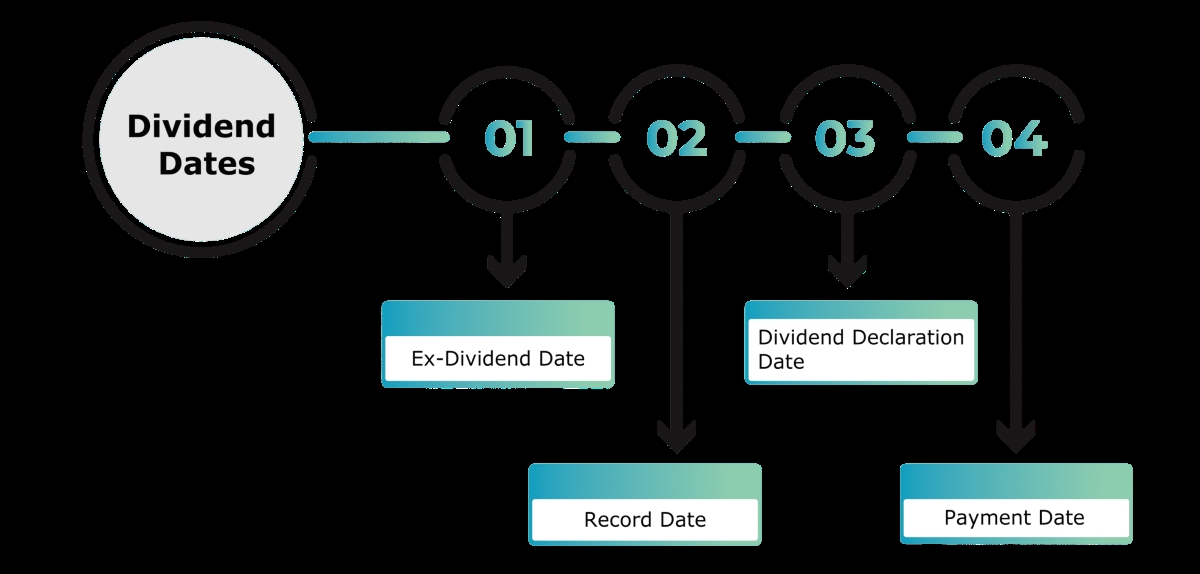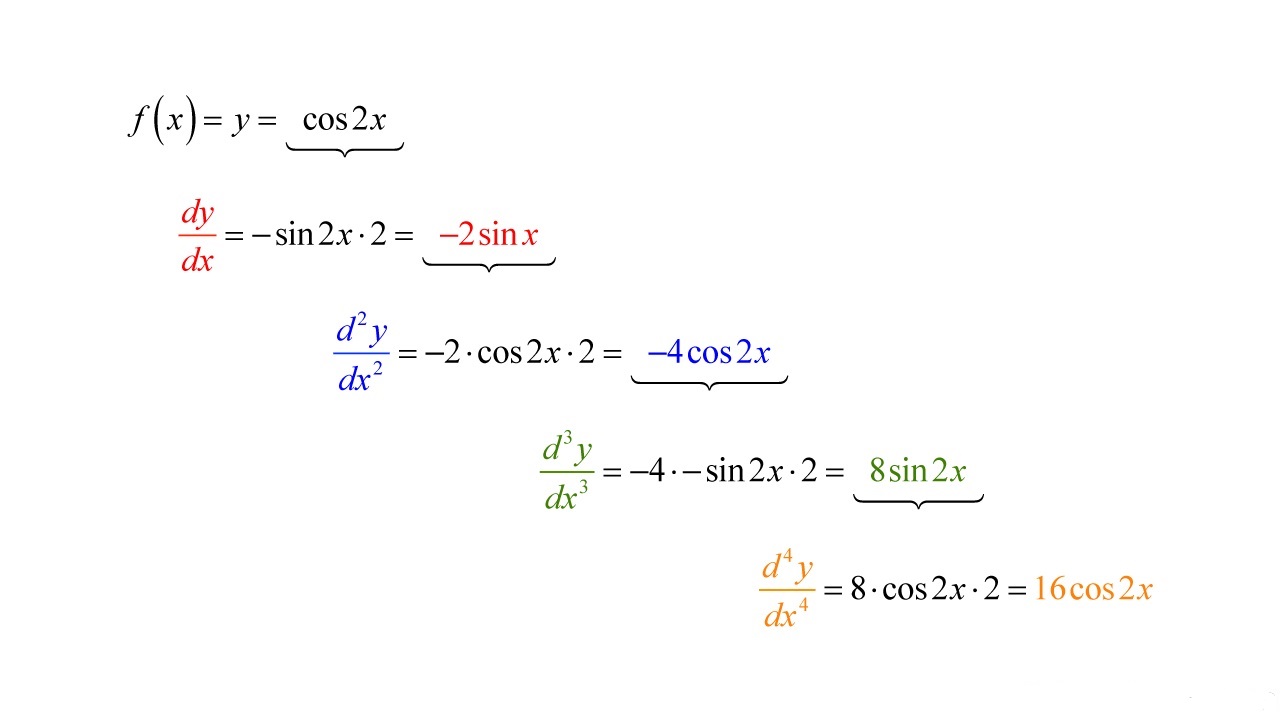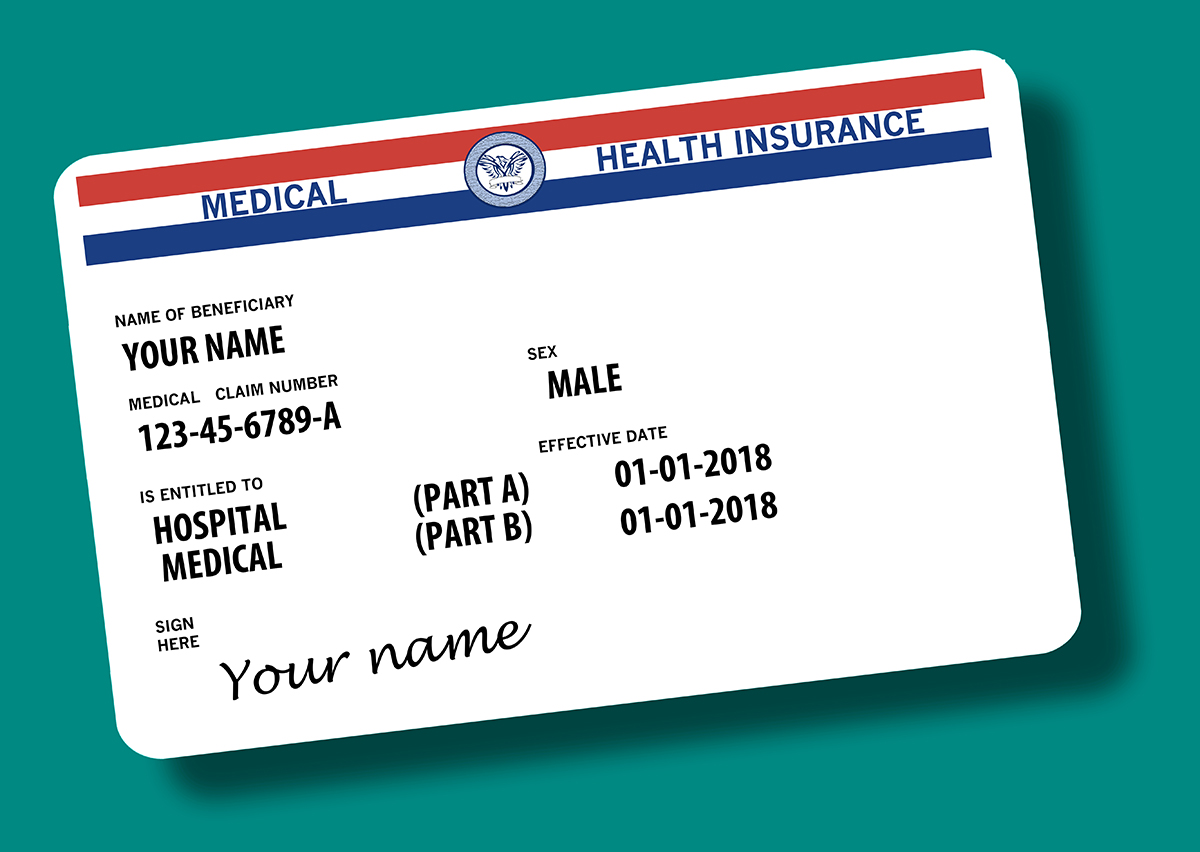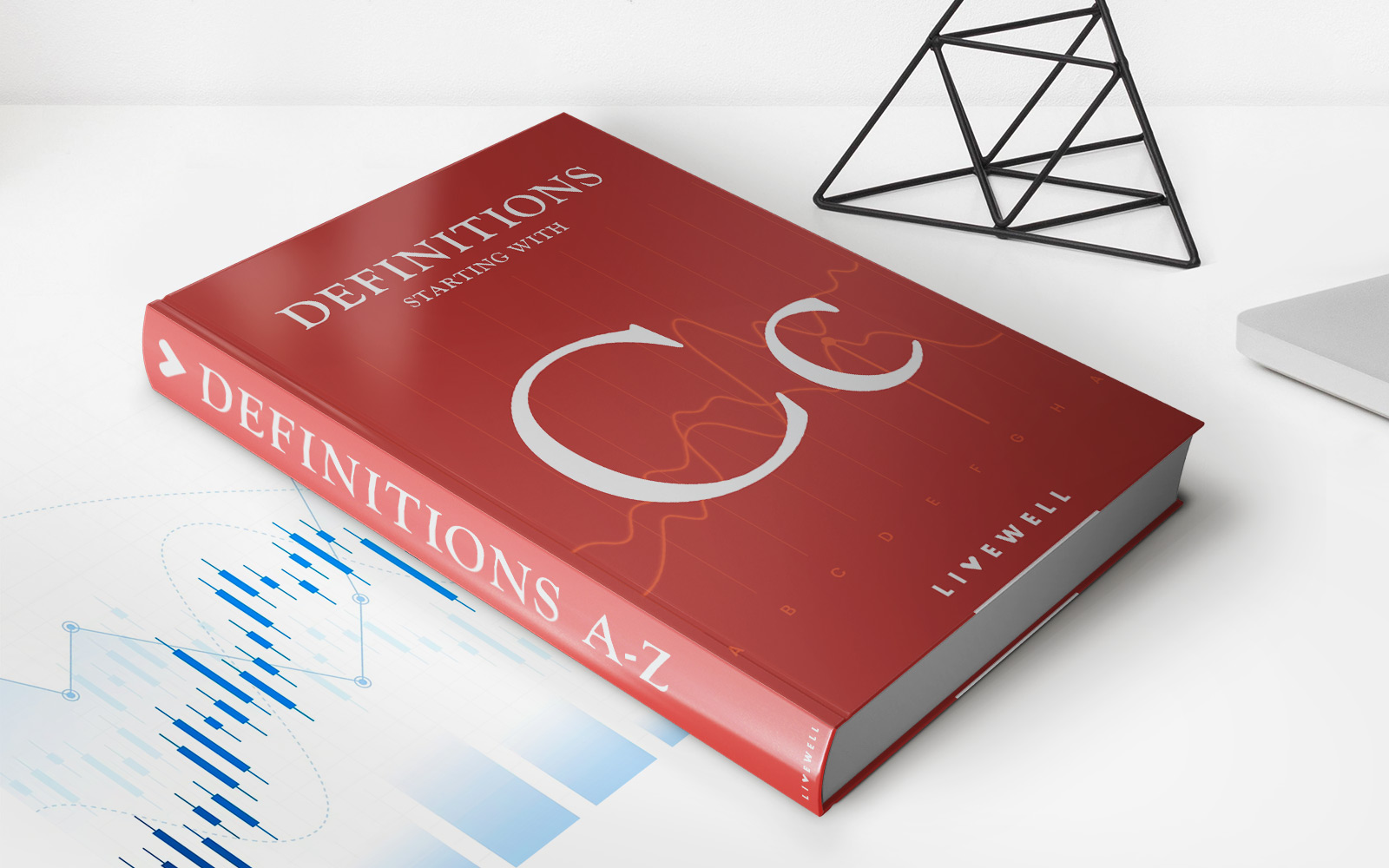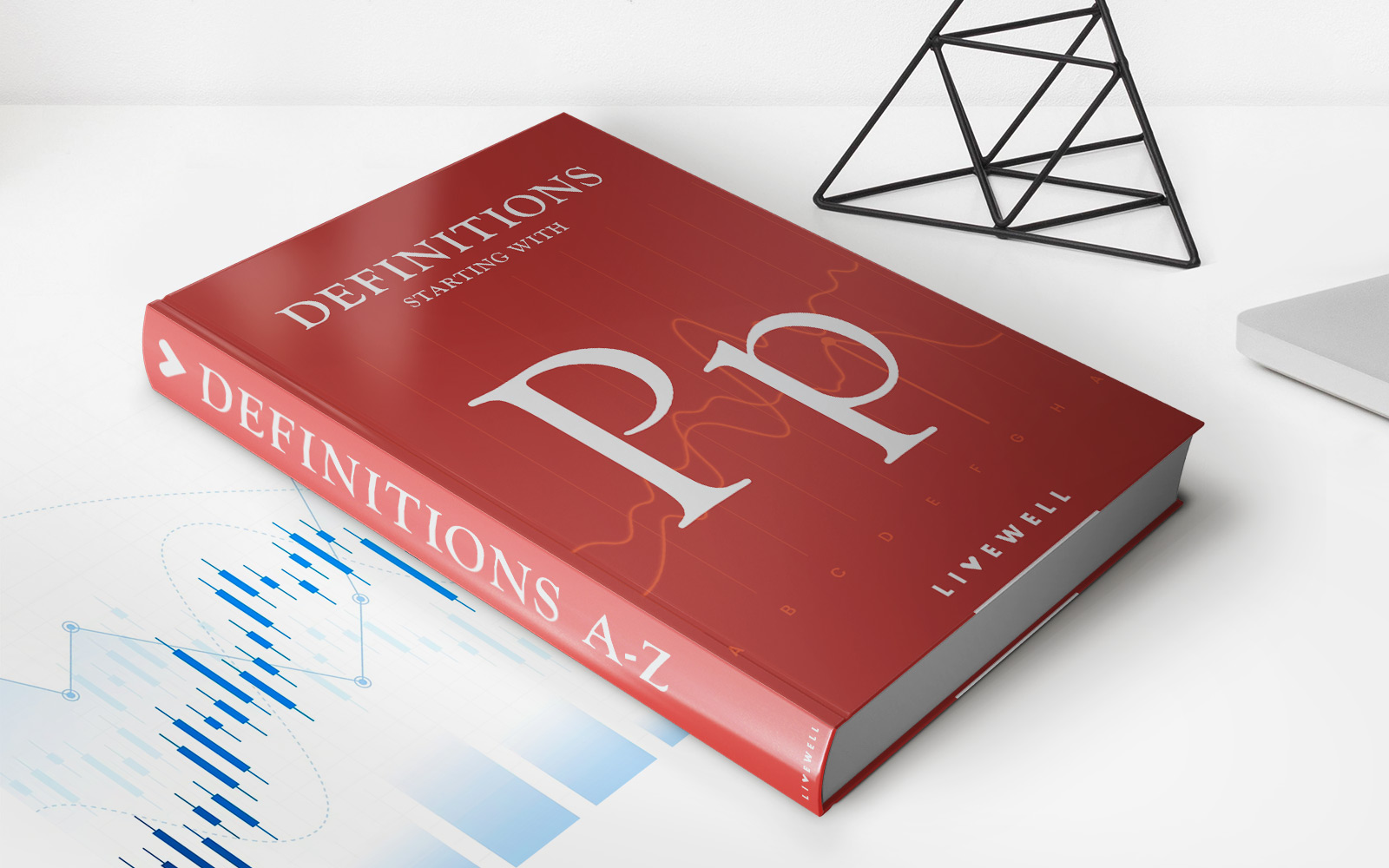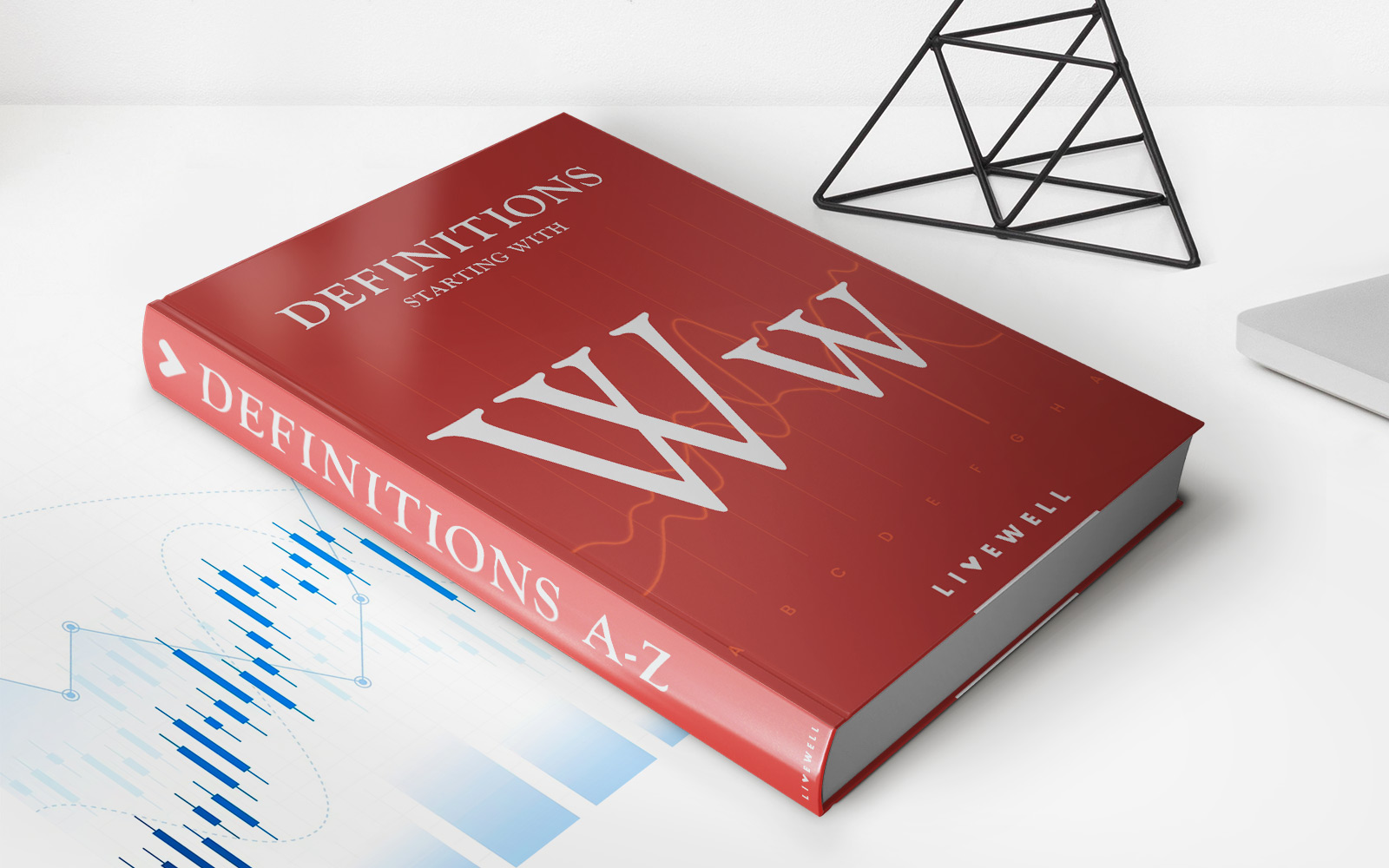

Finance
How To Find Insurance Declaration Page
Published: November 23, 2023
Learn how to find your insurance declaration page in our comprehensive guide. Discover what information it contains and how it impacts your finances.
(Many of the links in this article redirect to a specific reviewed product. Your purchase of these products through affiliate links helps to generate commission for LiveWell, at no extra cost. Learn more)
Table of Contents
- Introduction
- What is an Insurance Declaration Page?
- Importance of the Insurance Declaration Page
- Where to Find the Insurance Declaration Page
- Method 1: Contacting Your Insurance Agent
- Method 2: Checking Your Policy Documents
- Method 3: Accessing Your Online Insurance Account
- Method 4: Requesting a Copy from Your Insurance Company
- Understanding the Information on the Insurance Declaration Page
- Key Details to Look for on the Insurance Declaration Page
- Conclusion
Introduction
Welcome to our comprehensive guide on how to find your insurance declaration page. If you hold an insurance policy, it’s important to understand the details and coverage it provides. One of the key documents that can help you with this is the insurance declaration page. In this article, we will explain what an insurance declaration page is, why it is important, and where and how you can find it.
Insurance policies can often be complex and contain a lot of jargon. The insurance declaration page, sometimes referred to as the “dec page,” is a document that provides a summary of your insurance policy in a user-friendly format. It acts as a snapshot of your coverage and outlines important details such as policy limits, deductibles, and premium amounts.
Understanding your insurance declaration page is crucial for several reasons. First and foremost, it helps you ensure that you have the appropriate coverage for your needs. By reviewing the declaration page, you can verify that your policy includes the types of coverage you require and that the coverage limits are adequate.
Additionally, the declaration page is often required when you need to provide proof of insurance. Whether you’re buying a new car, acquiring a mortgage, or filing a claim, having quick access to your declaration page can facilitate these processes. It provides concise and relevant information to support your insurance needs.
Now, let’s delve into the various methods you can use to find your insurance declaration page.
What is an Insurance Declaration Page?
The insurance declaration page is an important document that provides a summary of your insurance policy. It is essentially a snapshot of your coverage, outlining key details such as policy limits, deductibles, and premium amounts. This page acts as a quick reference for policyholders to understand the scope and extent of their insurance coverage.
The declaration page typically includes information such as your name, address, and policy number. It also outlines the types of coverage you have, such as auto, home, or life insurance. For each type of coverage, it specifies the policy limits, or the maximum amount the insurance company will pay for a claim, and the associated premium cost.
In addition to policy limits and premiums, the declaration page may also include information on deductibles. A deductible is the amount that you, as the policyholder, are responsible for paying before the insurance company begins to cover the costs. For example, if you have a $500 deductible on your auto insurance policy and you file a claim for an accident that causes $2,000 in damages, you would pay the first $500, and the insurance company would cover the remaining $1,500.
Furthermore, the declaration page may include any additional policy endorsements or riders that modify or enhance the standard coverage. These could be add-ons such as umbrella liability coverage, which provides additional liability protection beyond what is included in your base policy.
It’s worth noting that the format and layout of the declaration page may vary slightly depending on the insurance company. However, the key information and details will remain consistent. It’s important to carefully review your declaration page to ensure that all the information is accurate and reflects your coverage needs.
Now that we understand the purpose and contents of the insurance declaration page, let’s explore where you can find this important document.
Importance of the Insurance Declaration Page
The insurance declaration page is a crucial document for policyholders. It serves as a valuable resource for understanding the coverage and details of your insurance policy. Here are some key reasons why the declaration page is important:
- Quick Summary of Coverage: The declaration page provides a concise overview of your insurance coverage. It outlines the types of coverage you have, such as auto, home, or life insurance, and specifies the policy limits for each. This allows you to easily understand the extent and scope of your coverage without having to go through the entire policy document.
- Proof of Insurance: The declaration page is often required as proof of insurance. Whether you’re purchasing a new vehicle, renting a property, or applying for a loan, you may need to provide proof of coverage. Having quick access to your declaration page makes it easier to provide the necessary documentation and satisfy these requirements.
- Understanding Policy Limits: Policy limits indicate the maximum amount the insurance company will pay for a claim. These limits are crucial to know because they determine the level of financial protection you have. The declaration page clearly states the policy limits for each type of coverage, allowing you to evaluate if they are sufficient for your needs.
- Identifying Deductibles: Deductibles are the amount you need to pay out of pocket before your insurance coverage kicks in. The declaration page outlines the deductibles for each coverage type, helping you understand your financial responsibility in the event of a claim. Being aware of your deductibles allows you to plan and budget accordingly.
- Policy Endorsements or Riders: The declaration page may also include any policy endorsements or riders that modify or enhance your coverage. These additional provisions can provide extra protection for specific situations or assets. The declaration page allows you to easily identify if any endorsements or riders have been added to your policy.
By understanding and reviewing your insurance declaration page, you can ensure that your coverage meets your needs and expectations. It provides transparency and clarity regarding your policy, allowing you to make informed decisions about your insurance coverage. Now, let’s explore where you can find your insurance declaration page.
Where to Find the Insurance Declaration Page
Now that we understand the importance of the insurance declaration page, let’s explore the various methods you can use to find it. Here are four common ways to access your insurance declaration page:
- Contacting Your Insurance Agent: The first and simplest method is to reach out to your insurance agent directly. They have access to your policy documents and can provide you with a copy of your declaration page. You can contact them via phone, email, or even in person to request the document.
- Checking Your Policy Documents: If you have a physical copy of your insurance policy, you can look for the declaration page within the document. It is usually near the beginning and clearly labeled. Review all the pages in your policy document to ensure you don’t miss it.
- Accessing Your Online Insurance Account: Many insurance companies now provide online portals or mobile apps for policyholders to manage their accounts. Log in to your insurance company’s website or app using your credentials, navigate to your policy details, and you should be able to locate and download your declaration page.
- Requesting a Copy from Your Insurance Company: If you are unable to find your declaration page through the methods mentioned above, you can contact your insurance company directly and request a copy. They will typically ask for your policy number and some identifying information to verify your identity and policy details before providing you with a copy of the document.
It’s important to note that the process may vary slightly depending on your insurance provider. Some companies may offer additional methods, such as live chat support or mailing physical copies of the declaration page. Contacting your insurance agent or reaching out to customer service is always a good option if you have any difficulties finding the document.
Now that you know where and how to find your insurance declaration page, let’s move on to understanding the information contained within it.
Method 1: Contacting Your Insurance Agent
If you are looking for a quick and reliable way to obtain your insurance declaration page, contacting your insurance agent is a great option. Your insurance agent is your dedicated point of contact who can assist you with any questions or concerns you may have about your insurance policy.
Here’s how you can go about contacting your insurance agent to request your declaration page:
- Gather your policy information: Before reaching out to your insurance agent, gather the necessary information such as your policy number, policyholder name, and any other relevant details. This will help expedite the process and ensure that you receive the correct declaration page for your policy.
- Call or email your insurance agent: Once you have the required information, contact your insurance agent through their provided phone number or email address. Explain that you need a copy of your insurance declaration page and provide them with the necessary details. Agents are usually prompt in assisting policyholders with their requests.
- Verify your identity: To ensure the security of your policy information, your insurance agent may ask you to verify your identity. They may require specific information such as your date of birth, address, or social security number to confirm that you are the policyholder.
- Receive your declaration page: Once your identity is verified, your insurance agent will provide you with a copy of your insurance declaration page. They may send it to you via email, mail a physical copy, or provide access to it through your online account.
It’s important to maintain a good relationship with your insurance agent as they can provide valuable advice and assistance throughout the life of your policy. Building a rapport with them can also make future interactions, such as renewing your policy or filing a claim, smoother and more efficient.
Contacting your insurance agent is a reliable method to obtain your declaration page, as they have direct access to your policy information. However, if you prefer to find the document on your own, there are other methods available, which we will explore next.
Method 2: Checking Your Policy Documents
If you have a physical copy of your insurance policy, checking your policy documents is a convenient way to find your insurance declaration page. The declaration page is typically included near the beginning of the policy document and is clearly labeled for easy reference.
Here’s how you can use this method to locate your declaration page:
- Retrieve your insurance policy: Locate your physical copy of your insurance policy. This could be a printed document that you received when you first purchased the policy or any subsequent policy renewal documents that have been mailed to you.
- Review the policy document: Once you have your policy in hand, carefully go through the pages. Look for a section labeled “Declaration Page” or something similar. It is usually located near the beginning of the document, as it provides an overview of your coverage.
- Confirm the information: Once you have found the declaration page, verify that the information matches your policy and personal details. Ensure that the coverage types, policy limits, deductibles, and other relevant information matches your expectations and needs.
- Make a copy for your records: If you want to keep a digital or additional physical copy of your declaration page, make sure to scan or photocopy it. This provides a backup in case the original document is lost or damaged.
It’s important to note that if you have made any changes to your policy, such as adding endorsements or riders, the declaration page in your physical copy may not reflect these modifications. In such cases, it is recommended to contact your insurance agent or company to obtain an updated declaration page.
Checking your policy documents is a convenient method for finding your insurance declaration page if you have a physical copy readily available. However, if you don’t have a physical copy or prefer a more digital approach, there are other methods you can explore, which we will discuss next.
Method 3: Accessing Your Online Insurance Account
If you prefer a digital and convenient way to access your insurance declaration page, logging into your online insurance account is an excellent option. Many insurance companies now provide online portals or mobile apps for policyholders to manage their accounts and access important policy documents.
Here’s how you can use this method to find your insurance declaration page:
- Visit your insurance company’s website: Open your web browser and navigate to your insurance company’s website.
- Login to your online account: Look for the “Sign In” or “Login” option on the website. Enter your username or email address and password to access your online account.
- Navigate to your policy details: Once you are logged in, explore the various options or tabs on the website to access your policy details. Look for a section or link that provides access to your policy documents.
- Locate and download your declaration page: Within your policy documents section, search for your insurance declaration page. It may be labeled as “Declaration Page,” “Dec Page,” or similar. Once you find it, click on the download or view option to obtain a digital copy.
- Save or print a copy: After downloading your declaration page, save it to a secure location on your computer or device. If you prefer a physical copy, consider printing it out for your records.
Accessing your online insurance account is a convenient method that allows you to locate and download your insurance declaration page at your convenience. It also provides access to other policy documents, renewal notices, and important updates from your insurance company.
If you haven’t set up an online account with your insurance company yet, check their website for information on how to create one. Most companies offer easy registration processes that require your policy information and a valid email address.
However, if you are having trouble finding your declaration page through your online account or prefer a more direct approach, there is another method available, which we will discuss next.
Method 4: Requesting a Copy from Your Insurance Company
If you are unable to find your insurance declaration page using the previous methods, or if you prefer a more direct approach, you can request a copy of the document from your insurance company. This method ensures that you receive an official copy of your declaration page directly from the source.
Here’s how you can use this method to obtain your insurance declaration page:
- Gather your policy information: Before contacting your insurance company, gather the necessary information such as your policy number, policyholder name, and any other relevant details. This will help the company locate your policy and provide you with the correct declaration page.
- Find the contact information: Locate the contact information for your insurance company. This can usually be found on their website, policy documents, or billing statements. Look for their customer service or claims department phone number or email address.
- Contact customer service: Reach out to your insurance company’s customer service department via phone or email. Explain that you need a copy of your insurance declaration page and provide them with the necessary policy information to verify your identity and policy details.
- Request a copy: Ask the customer service representative to provide you with a copy of your insurance declaration page. They may be able to email it to you, mail a physical copy, or provide access to it through your online account.
- Confirm the receipt: Once you have received the declaration page, review it to ensure that all the information is accurate and matches your policy. If you have any questions or notice any discrepancies, reach out to your insurance company for clarification.
Requesting a copy of your insurance declaration page directly from your insurance company ensures that you have an official and up-to-date document. It is a reliable method if you are unable to find your declaration page through other means or if you require further assistance from the company.
Keep in mind that the process may vary slightly depending on the insurance company. Some companies may offer additional methods, such as live chat support or providing access to the document through their mobile app. Contacting customer service is always a good option if you have any difficulties or specific requests.
Now that you know the different methods to find your insurance declaration page, let’s move on to understanding the information contained within it.
Understanding the Information on the Insurance Declaration Page
The insurance declaration page contains important information that provides a summary of your insurance policy. Understanding the details and terminology on the declaration page is crucial to ensure that you have the right coverage for your needs. Let’s explore the key elements you should look for:
- Policyholder Information: The declaration page typically includes your name, address, and contact information. Make sure that this information is accurate and up to date.
- Policy Number: The declaration page will have a policy number assigned to your insurance policy. This number is unique to your policy and serves as identification when dealing with your insurance company.
- Coverage Details: The declaration page outlines the types of coverage you have, such as auto, home, or life insurance. It specifies the coverage limits, indicating the maximum amount the insurance company will pay for a claim. It’s important to review these coverage limits to ensure they meet your needs.
- Premium Cost: The declaration page also includes the premium cost, which is the amount you pay for the insurance coverage. The premium can be an annual, semi-annual, or monthly payment. Verify that the premium amount matches what you agreed upon when purchasing the policy.
- Deductibles: Deductibles are the amount you need to pay out of pocket before your insurance coverage kicks in. The declaration page will specify the deductibles for each coverage type. Review these amounts and ensure you understand your financial responsibility in the event of a claim.
- Additional Coverage or Endorsements: The declaration page may list any additional coverage or endorsements added to your policy. These endorsements modify or enhance your coverage. Pay attention to these provisions, as they may offer extra protection tailored to your specific needs.
- Policy Period: The declaration page indicates the policy period, which is the timeframe for which your insurance policy is in effect. Take note of the start and end dates to ensure you have continuous coverage.
- Additional Information: Depending on the type of insurance, the declaration page may include additional information such as vehicle or property details, named insureds, or specific conditions or exclusions that apply to your policy.
Understanding the information on the insurance declaration page enables you to verify that your coverage aligns with your expectations. It also helps you ensure that the policy details, such as the policyholder information and coverage limits, are accurate.
If you have any questions or concerns about the information on your declaration page, reach out to your insurance agent or company for clarification. They will be able to provide you with the necessary guidance to understand your policy.
Now that you have a better understanding of the information contained on the declaration page, let’s wrap up our guide.
Key Details to Look for on the Insurance Declaration Page
When reviewing your insurance declaration page, it’s important to pay attention to certain key details. These details provide essential information about your coverage and help ensure that you have the appropriate insurance protection. Here are the key details to look for on the insurance declaration page:
- Coverage Types: Identify the types of coverage listed on the declaration page, such as liability, property, or medical coverage. Make sure they align with your insurance needs and expectations.
- Policy Limits: Take note of the coverage limits for each type of coverage. Policy limits indicate the maximum amount the insurance company will pay for a claim. Verify that the limits are adequate for your specific circumstances.
- Premium Amount: Check the premium cost mentioned on the declaration page. This is the amount you need to pay for your insurance coverage. Ensure that the premium matches what you agreed upon when purchasing the policy.
- Deductibles: Review the deductibles for each coverage type. Deductibles are the amount you are responsible for paying out of pocket before your insurance coverage kicks in. Understand the deductibles and make sure they align with your budget and risk tolerance.
- Endorsements or Riders: Look for any additional coverage or endorsements listed on the declaration page. These endorsements modify or enhance your policy coverage. Check if any endorsements are included and review their details to ensure they align with your specific needs.
- Policy Period: Take note of the start and end dates of the policy period. This specifies the timeframe for which your insurance policy is in effect. Ensure that your coverage is continuous and there are no gaps in protection.
- Policyholder Information: Verify that your name and contact information are accurate. This includes your name, address, and any other relevant details. Any errors could lead to communication issues or delays in case of a claim.
- Exclusions or Limitations: Pay attention to any exclusions or limitations mentioned on the declaration page. These are circumstances or situations in which your insurance coverage may not apply. Understand the exclusions to ensure you are aware of any potential gaps in coverage.
By actively reviewing and understanding these key details on the insurance declaration page, you can ensure that your coverage aligns with your needs and expectations. It provides you with a clear picture of the extent and limitations of your insurance protection.
If you have any questions or concerns about the details on your declaration page, reach out to your insurance agent or company. They can provide the necessary clarification and guidance to help you understand your policy thoroughly.
Now that you know what to look for on the declaration page, let’s conclude our guide.
Conclusion
Understanding your insurance declaration page is essential for every policyholder. This document serves as a summary of your insurance policy, providing important information about your coverage, policy limits, deductibles, and premium amounts. By familiarizing yourself with the declaration page, you can ensure that you have the appropriate insurance protection for your needs.
In this comprehensive guide, we explored various methods to find your insurance declaration page. Whether it’s through contacting your insurance agent, checking your policy documents, accessing your online insurance account, or requesting a copy from your insurance company, there are multiple avenues to obtain this vital document.
We also discussed the significance of the declaration page, such as its role in providing a quick summary of your coverage, serving as proof of insurance, and helping you understand policy limits and deductibles. It also highlights the importance of reviewing and understanding the information contained within the document, including coverage details, premium amounts, and any additional endorsements or riders.
Remember, if you have any questions or concerns about your insurance policy or the information on your declaration page, don’t hesitate to reach out to your insurance agent or company. They are there to assist you and provide the necessary guidance to ensure you have the right coverage and peace of mind.
By familiarizing yourself with your insurance declaration page and staying informed about your policy details, you can make informed decisions, confidently navigate your insurance needs, and ensure that you are adequately protected.
So, take the time to review your declaration page, understand its contents, and keep it easily accessible. Being proactive and knowledgeable about your insurance policy will help you make the most of your coverage and protect what matters most to you.



